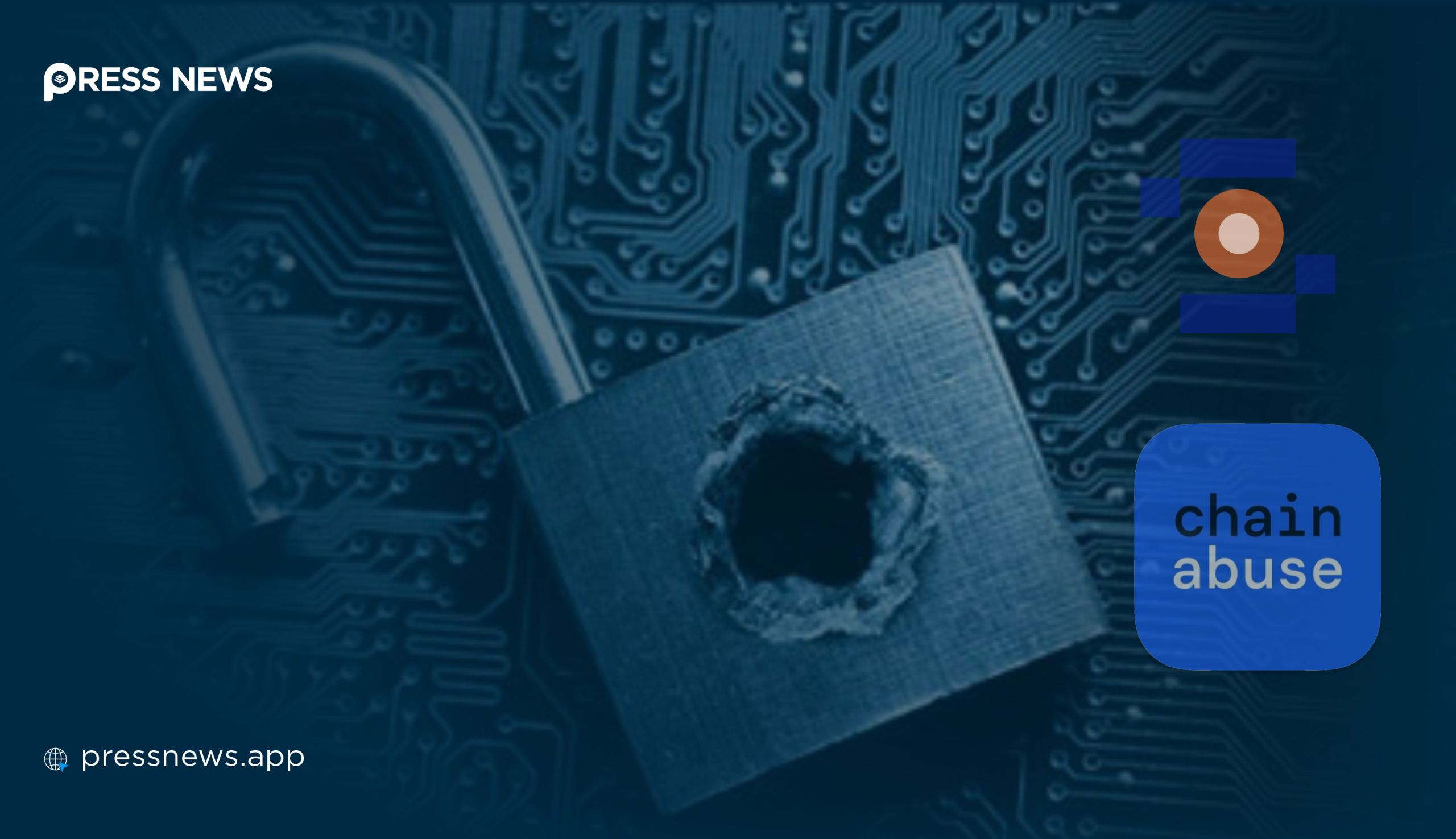Hedera Foundation Partners with The Binary Holdings to Onboard 169 Million+ Users
June 5, 2025 — As cryptocurrency fraud continues to escalate worldwide, two online platforms—Chainabuse and Scamwatch—are emerging as critical tools for victims seeking recourse. While recovering stolen funds often proves difficult, experts emphasize that submitting a detailed report can alert authorities, warn other potential targets, and aid in disrupting broader criminal networks.
Rising Tide of Crypto Fraud
Over the past decade, Bitcoin and other digital assets have attracted sophisticated criminals. According to the FBI’s Internet Crime Complaint Center (IC3), more than 140,000 cryptocurrency-related complaints were filed in 2024 alone, totaling roughly $9.3 billion in victim losses. “Older adults were disproportionately affected,” says FBI spokesperson Emma Rodriguez. “Our data shows that individuals over age 60 filed about 33,000 complaints last year, losing nearly $2.8 billion.” Such staggering figures underscore the urgency for accessible reporting mechanisms.
Chainabuse: Transparency over Confidentiality
Chainabuse, launched in 2023, bills itself as a “global reporting platform designed to fight crypto scams at scale.” Users can publicly post their experiences—ranging from bogus wallet addresses to elaborate phishing schemes—thereby creating a searchable database of malicious actors. According to Chainabuse communications manager Marcus Chen, “Our mission is simple: anyone who encounters a scam can share the details, and we broadcast that alert to exchanges, compliance teams, and law enforcement agencies.”
How Chainabuse Works
- Detail Collection:
Victims begin by gathering as much technical information as possible: the Bitcoin address involved, transaction hashes, any URLs or domain names used by scammers, and even IP addresses if available. - Submitting a Report:
By visiting Chainabuse.com and clicking “Report Your Case,” users select a scam category—such as “fake investment scheme” or “phishing site”—and provide a factual, first-person account of events. They can upload screenshots, wallet logs, or email threads as supplementary evidence. - Public vs. Private Option:
Chainabuse allows victims to choose between a fully public report (visible to everyone) or a private submission (shared only with law enforcement partners). “Even private reports are hashed into our database,” says Chen. “That way, if multiple victims report the same Bitcoin address, we can connect those dots without publicly revealing sensitive user details.”
Chainabuse’s open platform has quickly gained traction among compliance teams at major exchanges. “When we see a new address flagged repeatedly, we can freeze associated accounts and investigate further,” explains compliance officer Lydia Baxter from a leading U.S. exchange. “Chainabuse’s data-sharing model has improved our ability to identify evolving scam networks.”
Scamwatch: Australia’s National Anti-Scam Hub
Operated by the Australian Competition and Consumer Commission (ACCC), Scamwatch focuses more broadly on scams—both online and offline—that target Australians. Its cryptocurrency section, in particular, has seen a sharp uptick in reports. “In the last year, we received over 7,000 crypto-related submissions,” notes ACCC analyst Daniel Nguyen. “Although we don’t launch individual investigations, our aggregated data allows us to spot national trends and issue timely warnings.”
Steps to Report on Scamwatch
- Accessing the Platform:
Australians—or anyone whose scam involves an Australian entity—can navigate to Home | Scamwatch and click “Report a Scam.” - Providing Incident Details:
The online form prompts for essential information: the type of scam, the date and time it occurred, how the scammer contacted the victim (social media, email, in-person pitch), and any impersonation of known organizations. - Uploading Evidence:
If available, victims can attach screenshots of suspicious messages, transaction records, or the fake website URL. - After Submission:
While Scamwatch does not investigate individual cases or guarantee fund recovery, Nguyen stresses, “Your report feeds into a broader dataset used by law enforcement, telecommunication companies, and financial institutions to develop countermeasures.”
Since Scamwatch started tagging trends—such as a surge in “NFT giveaway” scams—local banks have updated their customer alerts, and mobile carriers have tightened verification checks to block known phishing domains.
Why Reporting Matters
Although both Chainabuse and Scamwatch explicitly disclaim the ability to refund lost cryptocurrency, reporting remains a vital first step. “Victims often feel powerless,” says digital-forensics expert Dr. Priya Singh. “When you submit a detailed account—especially with transaction hashes—you enable the community to identify “hot” addresses and prevent downstream victims from losing funds.”
Chainabuse’s public repository has already exposed several “bad actors” who reused the same Bitcoin addresses across dozens of schemes. One high-profile case involved a group that posed as celebrity-endorsed investment firms. After receiving multiple Chainabuse reports flagged under “fake ICO” and “high-yield promise,” major exchanges swiftly blocked transactions to those addresses, cutting off the scammers’ cash-out routes.
On the Scamwatch side, the ACCC’s data aggregation helped prompt an advisory in early 2025 about “deepfake” impersonators contacting Australians via WhatsApp. In that advisory, Scamwatch director Emily White noted, “Scammers have begun using AI-generated voices to mimic family members—don’t be afraid to hang up and verify identity through separate channels.”
Expert Tips to Avoid Future Scams
While both platforms strongly encourage reporting after an incident, prevention remains the best defense. Experts offer a few universal guidelines:
- “Never Trust Guaranteed Returns.”
If someone promises risk-free profits, treat it as a red flag. As Chen from Chainabuse puts it, “No legitimate investment guarantees a fixed return—especially in crypto.” - “Double-Check Every Address.”
Even a single mistyped character can send funds irretrievably to a scammer. “Always copy and paste addresses; never rely on QR codes unless you’ve verified them,” advises Baxter, the exchange compliance officer. - “Verify Through Official Channels.”
If someone claims to represent a well-known exchange or influencer, cross-check their identity on the official website or social-media channels. “Scammers often create convincing but fraudulent profiles,” says Dr. Singh. “Look for verification badges and cross-reference email domains.” - “Avoid Clicking Suspicious Links.”
Phishing websites can be nearly identical to real platforms, making it crucial to hover over URLs and confirm the domain before entering any credentials. Nguyen of Scamwatch adds, “When in doubt, search the website name plus ‘Scamwatch’—you might find a warning already posted.” - “Use Public Databases.”
Check any unfamiliar Bitcoin address or domain on Chainabuse before sending funds. A “no-match” result isn’t a guarantee of safety, but a flagged result should send you running.
Finally, experts underscore that emotional reactions—shame, anger, or denial—often deter victims from speaking up. “Scammers count on people staying silent,” says Dr. Singh. “Your willingness to report can protect countless others.”
Alternative and Complementary Reporting Channels
While Chainabuse and Scamwatch are frontline options, victims can amplify impact by filing with secondary agencies:
- Internet Crime Complaint Center (IC3) in the United States accepts cryptocurrency fraud reports that feed directly into FBI investigations.
- Federal Trade Commission (FTC) also collects consumer complaints—though it does not undertake criminal prosecutions, its data informs nationwide fraud prevention strategies.
- Action Fraud in the United Kingdom serves a similar role, consolidating reports for the National Fraud Intelligence Bureau.
“Submitting to multiple platforms increases the chance that someone, somewhere, will take decisive action,” says White of Scamwatch. “It also ensures your case becomes part of a larger mosaic that investigators rely on to map out criminal networks.”
Looking Ahead: Building a More Resilient Community
As Bitcoin’s value and popularity continue to rise—surpassing $70,000 per coin at points in 2024—experts predict that scam sophistication will only grow. “From AI-driven social engineering to deepfake videos, criminals are innovating as fast as blockchain developers,” warns Dr. Singh. “But public reporting tools like Chainabuse and Scamwatch give us a fighting chance to stay one step ahead.”
For now, the takeaway is clear: while no single platform can guarantee fund recovery, submitting a thorough, fact-based report can save others from falling into the same trap. Whether you opt for Chainabuse’s global, blockchain-focused repository or Scamwatch’s national-level watchtower, the act of reporting constitutes a vital line of defense against an ever-evolving threat.


 Press Labs Inc.
Press Labs Inc. 








